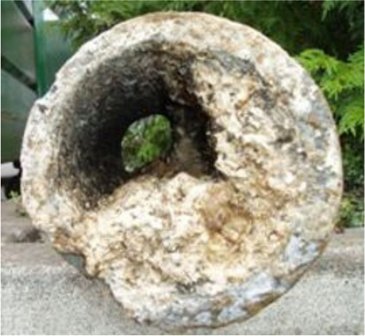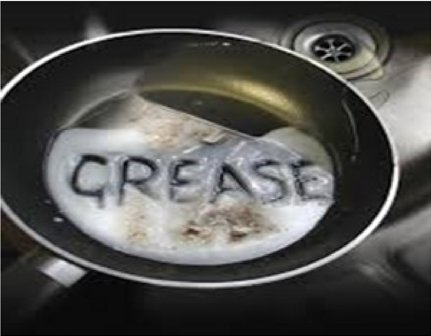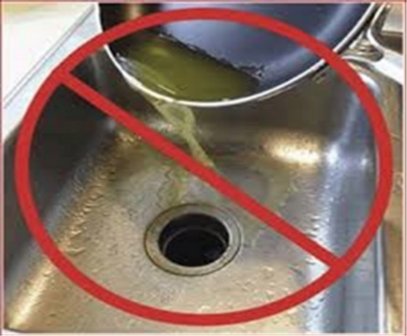GREASE
GREASE IS A PROBLEM in the sewage collection and treatment business. Grease is singled out for special attention because of its poor solubility in water and its tendency to separate from the liquid solution. Large amounts of oil and grease in the waste-water cause trouble in the collection pipes and wastewater treatment plant.
 |
 |
RESIDENTIAL/HOMEOWNER
Grease from cooking, gravy, cooking oil, and sauces may look harmless as a liquid, but when it cools it gets thick and sticky. That means if you pour grease down the drain it sticks to pipes and eventually causes clogs and messy backup into homes.
PREVENT BACKUPS IN BY POURING ALL COOKING GREASE INTO A CAN, PUTTING IN THE FREEZER, THEN TOSSING IT IN THE TRASH.
 |
 |
Restaurants/Food Establishments
Sanitary sewer overflows (SSO) and sewer line maintenance due to FOG (fats, oils & grease) waste have been on the rise. This has prompted stricter enforcement of ordinances and regulations goverening FOG discharge into the sewer system. Enforcement requires the installment and proper maintenance of a pretreatment device commonly known as a GRD (Grease Removal Device).
There are two types of GRD’s:
- Grease Trap (indoor) – Intended for limited food or drink preperation, typically found very close to a pre-wash
sink. - Grease Interceptor (outdoor) – Intended for food and drink operations, found outside because of large capacity
for FOG.
Inspections of these facilities will be conducted to ensure thay are doing their part to keep FOG and all other harmful substances out of the sewer lines. Inspections are based on Center Township Ordinance Number 1-2008 and Center Township Rules andRegulations Article V. Refer to our BEST MANAGEMENT PRACTICES FOR RESTAURANT GREASE for more information.
ALL FSE (FOOD SERVICE ESTABLISHMENTS) ARE REQUIRED TO HAVE A GREASE REMOVAL DEVICE